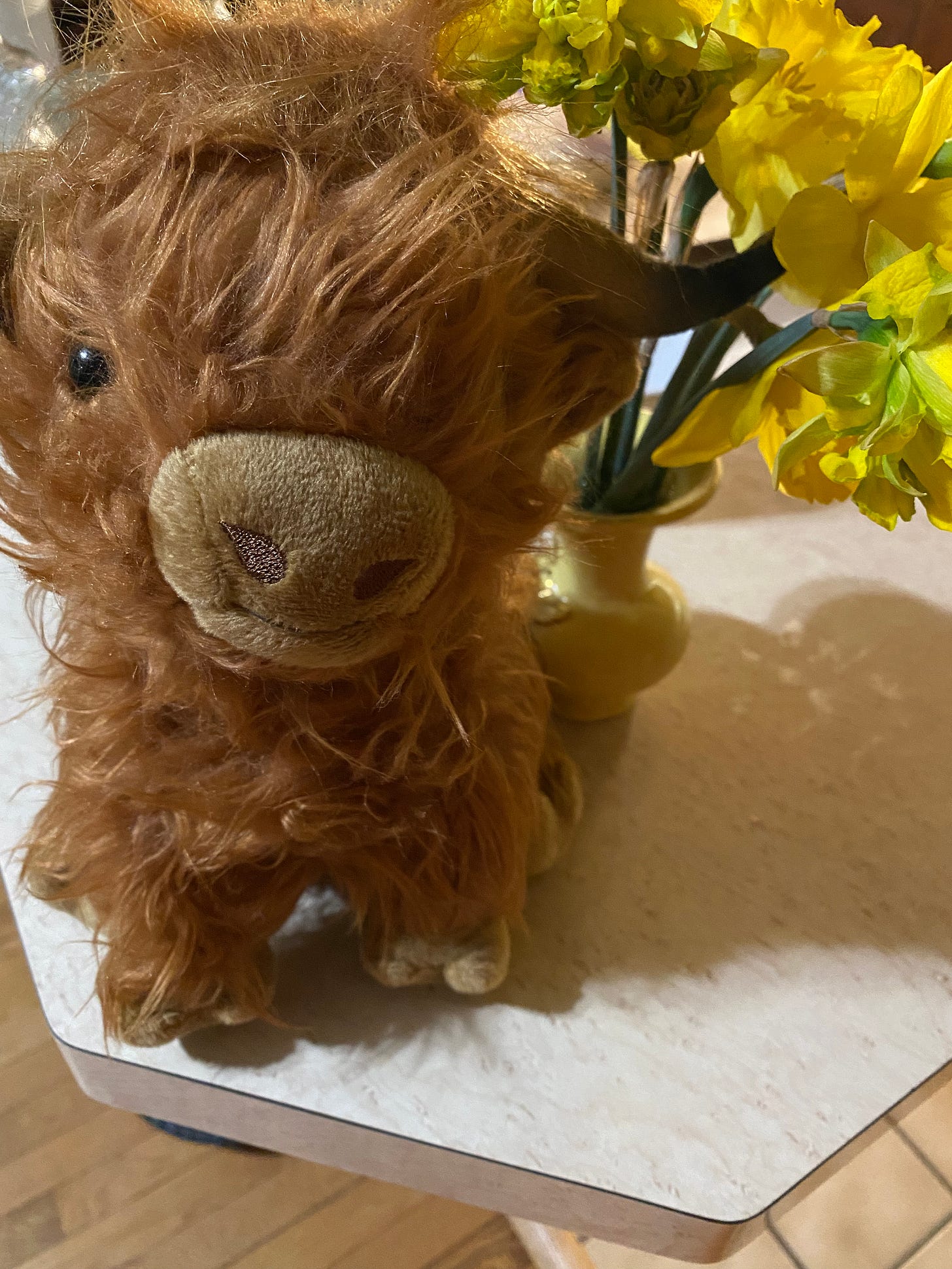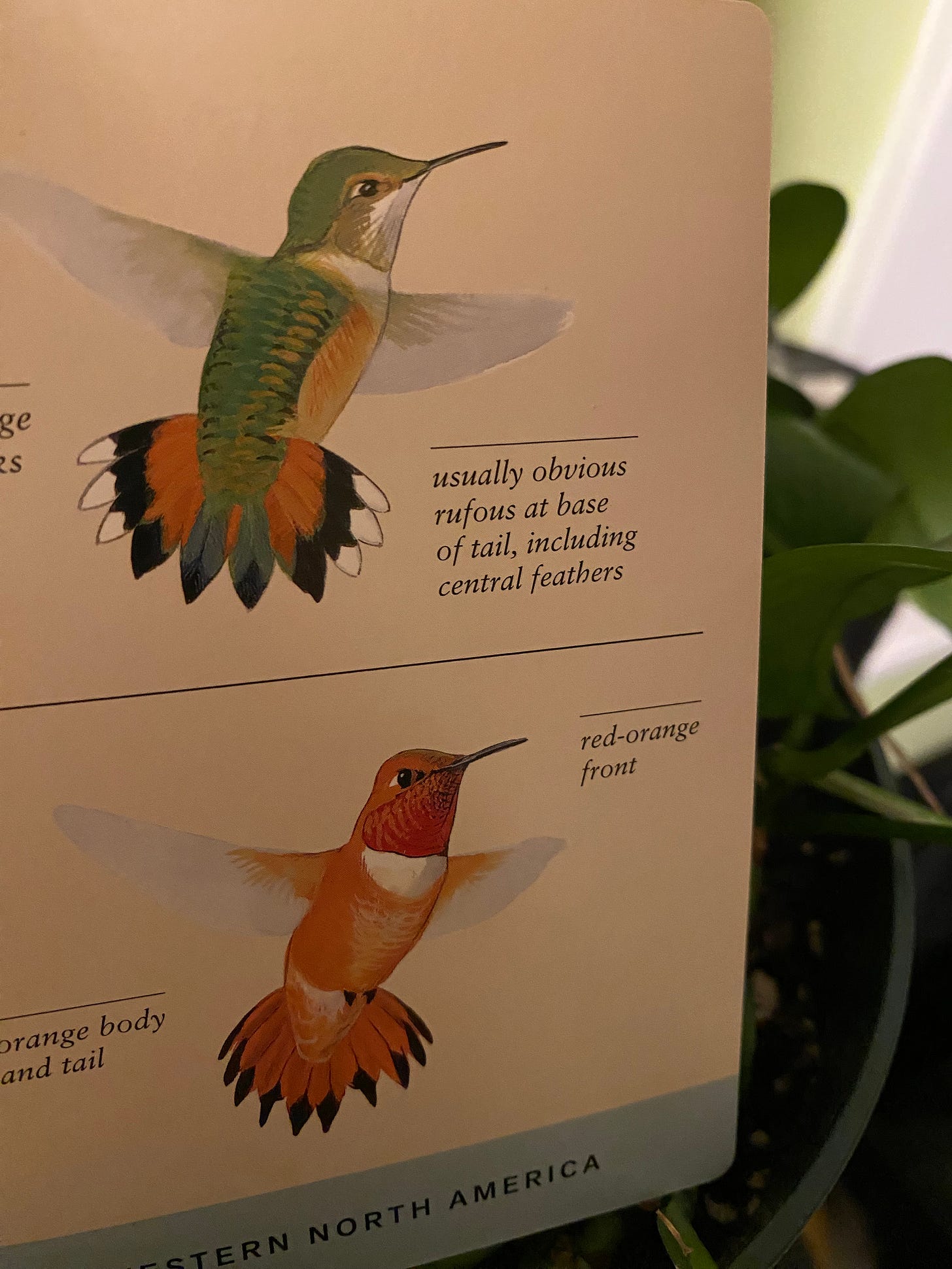Why learn self-defense if you don't want to fight
coming in to connection with a grounded sense of self.
I’m co-teaching a self-defense / assertiveness class right now, and remembering how learning to yell “no” and learning to punch was so important to finding my way out of constant self-monitoring, people pleasing, and fleeing from care. I’m developing a new kind of fight-flight-freeze model, that’s like fight-flight-submit and if none of those are possible freeze, but if all of them are possible it allows you to connect to self/ground/spirit/other instead.
What I mean is, a non-traumatized brain, when it receives a signal of danger, the first instinct is to turn to another for care/connection/protection. How a baby turns to its caregivers. A herd of deer move closer together before they run.
With trauma, our brains adapt and certain areas become defaults. We may be strong in the fight response, always jumping to action, being physical or verbal, arguing, protesting, defending. Or we may be strong in flight, always skittish, dreaming or dissociated, leaving at the first sign of trouble, pulling others out of harm's way. We may be strong in submit, cowering, fawning, or not even knowing our wants so it isn’t as difficult to mold ourselves to the wants of others, or able to appease and stop violence.
We may have certain sectors extinguished. We learned people are dangerous so we never turn for connection. We learned flight is impossible, so we anxiously hold on at all cost. We learned fight was violence, so we lose the ability to stand up for ourselves. We learned submission was dangerous, so we are unable to compromise or see the value in another’s differing opinion.
In the world of somatic therapy, there’s a common saying that when the body is sending signals for both fight and flight at the same time, it’s like having the gas and brakes on at once, and the body goes into freeze. I have seen this for sure, working with incident specific traumas. As a therapist, I help clients work with a trauma moment and imagine flight was possible. We track the body's response as it completes an imaginary scenario where it was able to get away. Then we go back and do fight. Slowing down and tracking the body’s response as it imagines a fight response, breaking open a taboo world where the body gets to do what the personality never would, and find completion in that physiological instinct for protection and defense.
But with more complex traumas, like ongoing, family generational and relational traumas, it seems more like sometimes all the options, fight, flight, submit all get extinguished and freeze just becomes the default in most scenarios.
I’ve been thinking about how reestablishing the brain’s connection to the possibility of all three (fight, flight, submit) being available is what makes feeling solid in the knowledge of oneself, and the ability to connect to other people in the face of conflict possible.
If the brain is like “I could just turn around and leave, I could stand up for myself, I could appease,” then it doesn’t have to react from a triggered place. It come at all kinds of situations from such a grounded space.
Since fight is cut off for so many of us, I love how queer, trans, and feminist self-defense can facilitate reconnecting with empowerment and possibilities, even if you never intend to throw a punch or yell at the top of your lungs. A lot of self-defense classes are really shitty, macho, misogynist and expensive, with big dudes teaching, and focusing on really specific moves to get out of extreme situations. Back in the 90s, because of this lack of decent self-defense classes in the wake of a friend of being murdered, a bunch of people in the Pacific NW created Home Alive, and after years of teaching workshops, they offered up this curriculum for people anywhere to follow. It is such a gift!
One of my favorite exercises in it is the Yes Stomp. You stand with your knees slightly bent, one foot a little in front of the other, feeling your center of gravity, feeling your ground. You call out something you want to say yes to in your life. Then you stomp your foot as hard as you can and yell “Yes” as loud as you can, using your deep breath, embodied voice. It’s so great. You might want to try it now.







Ohh I love the YES! exercise!
Thank you for writing this one!! Super cool and helpful